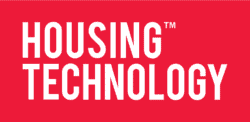There is continued pressure for housing providers to be more responsive in handling calls from their residents within the confines of limited budgets. It is therefore not surprising that efficiency and effectiveness are two words you always hear when speaking to contact centre managers. Peter Graddon, a director of Omfax Systems, discusses how to improve the effectiveness of call centres.
Balancing efficiency and effectiveness is a continual challenge. How do you reduce call durations while ensuring your service is of the highest standard, and that a high proportion of your residents’ enquiries are completed within a single call?
Streamlining contact centre processes
As housing organisations aim to put more of their calls through a front-line contact centre, a greater burden is placed on the advisor to handle these calls in an efficient manner. While effective training helps, it is still difficult for advisors to handle the diverse range of enquiries received from callers.
In contact centres that only deal with a small set of enquiries, it is easy to focus on each enquiry type and provide detailed documentation for that particular process. Housing providers do not have that luxury as there are a vast range of potential enquiries and it would be overwhelming for contact centre managers and advisors to have separately-documented processes for each type of enquiry.
A different approach is required and organisations need to look for the common elements across their diverse set of calls and find consistent ways of dealing with residents’ enquiries in general. At the highest level, most call flows consist of identifying the resident, finding out the nature and detail of their enquiry, giving the required information to the resident or ‘actioning’ their request, and then closing the call. Standardising these elements is the first step towards a consistent and optimised process for dealing with residents’ enquiries.
The next step is to look at the detailed processes; the middle part of the call. This is where the online tools that you give your advisors deliver value. By providing a single response management system, advisors have a single framework and standardised approach to handling enquiries, which enables them to categorise the nature of the enquiry and which guides them through the optimum call flow to deal with that enquiry.
Regardless of whether the advisor is talking to a prospective resident regarding allocations or handling a repair call from an existing resident, the tool they are using and the flow of screens is familiar and consistent. They are able to focus on their conversation with the resident while the system manages the process, guiding them through the required questions and furnishing them with ‘organisation’ knowledge rather than solely relying on their ‘individual’ knowledge.
This approach achieves two objectives. First, it reduces call durations by ensuring that the advisor follows the optimum route to arrive at the appropriate call resolution. Second, it maximises the likelihood of the advisor being able to fully service the resident’s enquiry, significantly reducing the inefficiencies of repeat calls.
In addition, a response management system enables processes to be continually reviewed, optimised and streamlined. For example, if changing the ordering of specific questions or inserting a new question enables faster resolution time, this can be changed in the system in seconds and immediately have an impact on the inbound calls. Without such a system, processes need to be adjusted, documented and training given to advisors before those changes can be introduced.
Ensuring organisation-wide effectiveness
Standardising, streamlining and increasing the effectiveness of processes extends further than just the contact centre. You can easily reduce call durations on repair calls by collecting less information from the resident but this will undoubtedly have a major negative impact on your repairs operations. By using a response management system that not only focuses on the ‘call’ component of the process but also the required flow of information outside the contact centre, you can achieve organisation-wide optimisation of processes.
A response management system allows the customer service advisor to do more earlier in the call and therefore improve the efficiency and effectiveness of the following parts of the call. For example, a resident may call to report a fault with an electric socket; by having the advisor take them through structured questions, such as “have you tried another appliance in the socket?” and “have you checked the trip switch?”, can significantly reduce unnecessary operative visits.
Delivering quality service consistently
The final element in streamlining processes is the introduction of consistency. Regardless of how frequently a resident calls your contact centre, you want every experience to be of the highest quality and not dependent on whom they speak to. By standardising the process and using a response management system, service delivery becomes consistent and the outcomes are driven by the system and not solely dependent on the advisor.
In summary, an effective response management system allows you to drive a consistent structure across all of your residents’ enquiries. It lets you optimise the overall process and then provide a common method to manage the detail of each individual process. It drives greater efficiency from your advisors, it provides a consistently-effective service to your residents, and it streamlines processes across your entire organisation.
Peter Graddon is a director of Omfax Systems.

